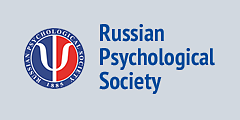Validity and Reliability of the ‘Difficulties in Emotion Regulation Scale' – 16-Item Version (DERS-16) – with University Students in Ecuador
Abstract
Background. Emotional regulation difficulties (ERD) are present in the Ecuadorian university student population; however, the specific assessment measures available do not allow for an efficient assessment.
Objective. To validate the Difficulties in Emotion Regulation Scale -16 Item Version (DERS-16) with Ecuadorian university students.
Design. The research uses a descriptive and instrumental statistical analysis of the DERS-16 to analyze the validity of the construct, validity based with other variables (divergence) and the internal consistency of the model. 670 university students from two public universities in Ecuador (76% women and 24% men). The average age was 25.9 with a 7.1 standard deviation (SD).
Results. A hierarchical factorial model with five first-order factors and one second-order general factor fit the data reasonably well. The model has adequate internal consistency and construct validity; particularly for the second-order general factor. The DERS-16 also shows divergence validity with the Academic Situation-Specific Perceived Self-Efficacy Scale (EAPESA-9).
Conclusion. The DERS-16 is a consistent and reliable scale for the measurement of emotional regulation in Ecuadorian university students.
Received: 04.01.2025
Accepted: 11.07.2025
PDF: Download
Pages: 108–123
DOI: 10.11621/pir.2025.0307
Keywords: emotional regulation difficulties; reliability; emotional regulation; validity; university students
Introduction
Emotional regulation (ER) is an intrinsic process that allows individuals to control the outward flow of emotions (Eisenberg & Spinrad, 2004; Gross, 1999). The development of emotional regulation is a gradual process of conditioning and vicarious learning that occurs throughout childhood and adolescence (Moya-Solís & Moreta-Herrera, 2022) as well as adulthood (Isaacowitz, 2022). ER requires the identification of specific experiences that require an emotional response. This involves a modulation of the associated physiological response, the toleration of discomfort (if any), and an emotional expression that corresponds to valid interpretations of the experience (Gratz & Roemer, 2004; Gross, 1999; Moreta-Herrera et al., 2023). For this reason, emotional regulation serves as a mechanism that allows adjustment and adaptive responses (Gross, 2015) that contribute to individual well-being (Rodas et al., 2021). This process involves various cognitive and behavioural strategies such as monitoring, evaluation, and modification of intense emotional states to allow for their adequate development (Gross & John, 2003). When individuals cannot access these strategies successfully, they have difficulty evoking a fluid and controlled emotional response, which results in emotional regulation difficulties (ERD); this includes a limited, incomplete, or inadequate process of evoking an emotional experience (Gratz & Roemer, 2004). These difficulties can manifest in diverse ways, including an inability to adequately identify or express emotions, or difficulties modulating affective responses to stressful or uncomfortable situations (Ehring et al., 2010). ERD involves difficulties such as: (a) understanding and being conscious of emotions; (b) accepting emotions; (c) impulse control and the ability to behave according to objectives when in the presence of a negative affect; and (d) access to effective regulation strategies that help an individual feel better (Gratz & Tull, 2010; Gratz & Roemer, 2004).
In a clinical context, emotion regulation difficulties can trigger emotional and behavioural disorders (such as depression, anxiety, personality disorders). ERD can also affect quality of life, interpersonal relationships, social functioning, and other domains (Moreta-Herrera et al., 2024; Woodward & Viana, 2018). It also has significant implications for the educational context at its various levels. Dysregulation processes impact aspects of adjustment and adaptation to the academic system, such as increased impulsivity, procrastination, boredom, and school dissatisfaction (Mohammadi Bytamar et al., 2020; Singh & Singh, 2013; Weybright et al., 2022). These ultimately impact overall academic performance and learning regulation (Regatto-Bonifaz et al., 2025), although this has not been fully demonstrated. This is primarily due to the limited availability of assessment measures for DREs adapted and tailored to the university population.
Research on the topic remains scarce, despite the need to delve deeper into the emotional dynamics that impact school settings. In the case of Latin America, there are few studies investigating and validating the psychometric characteristics of DER measurement tools (Blancas-Guillen et al., 2024; Correa et al., 2024; Miguel et al., 2017; Muñoz Martinez et al., 2016; Rosa-Gomez et al., 2021) and to a greater extent, connected with other variables associated with schooling to identify the proximity or even independence of certain constructs. This is significant given that, while research is sparse, some studies suggest that, among university students, ERD have a negative effect on students’ performance (Mohammadi Bytamar et al., 2020; Singh & Singh, 2013), mental health (Liuet et al., 2021), and self-efficacy (Regatto-Bonifaz et al., 2023), although in Latin America and Ecuador especially that has not been verified. This is important given that this population is particularly susceptible to emotional problems (Moeller et al., 2020).
The availability of measurements that have been validated for this population is thus particularly urgent. The present study looks to address this gap in the research by exploring the validity of the DERS-16 with an Ecuadorian university student population.
The DERS-16 and Its Psychometric Limitations for a University Student Population
The Difficulties in Emotional Regulation Scale (DERS; Gratz & Roemer, 2004) has been the standard evaluation tool for measuring emotion dysregulation. The original version had 36 items and six dimensions: a) non-acceptance of emotional responses; b) difficulties in engaging in goal-oriented behaviours; c) difficulties in impulse control; d) lack of emotional awareness; e) limited access to emotion regulation strategies; and f) lack of emotional clarity. Each dimension of the scale refers to issues with emotion regulation strategies.
Despite the widespread use of the DERS for measuring ERD, the psychometric structure, as well as its item count, have been called into question. For example, the Spanish translation of the DERS (Hervás & Jódar, 2008) proposes reducing the number of items to 28 and combining two of its dimensions (“difficulties in impulse control” and “limited access to emotion regulation strategies”). On the other hand, Bardeen et al. (2012) suggest that the “lack of emotional clarity” dimension should not be considered an emotion regulation strategy per se. They argue that the dimensions of the DERS should be reduced and that its structure should be rethought. Bjureberg et al. (2016) offer a 16-item version of the DERS (DERS-16). The DERS-16 eliminates items that significantly affect the consistency of the questionnaire (Smith et al., 2000), and reduces the dimensions of the tool to five as per the suggestion of Bardeen et al.: a) nonacceptance of negative emotions (three items); b) inability to engage in goal-directed behaviours when distressed (three items); c) difficulties controlling impulsive behaviours when distressed (three items); d) limited access to emotion regulation strategies perceived as effective (five items); and e) lack of emotional clarity (two items). The study of Bjureberg et al. (2016) study showed that the DERS-16 has an excellent internal consistency, good test/retest reliability, and good convergent and discriminant validity. While that study did not include factorial analysis, the authors hypothesized that the questionnaire has five correlated factors.
The DERS-16 has been validated in adult populations in different countries, including Finland, (Westerlund & Santtila, 2018), Brazil (Miguel et al., 2017), and Colombia (Correa et al., 2024). These studies found that the DERS-16 has adequate reliability and convergence validity when compared to other ER scales; further, all these studies assumed a factorial structure with five oblique factors. However, studies with a Norwegian population (Visted et al., 2023) and a United States population (Sörman et al., 2022) offered a revised factorial structure, adding a general factor by using a bi-factor design that identifies specific factors along with a general factor. The study of Moreta-Herrera et al. (2024) study with Ecuadorian adolescents proposed a hierarchical factorial model with five first-order factors and one second-order general factor. So far there is no conclusive evidence to prove a unique factorial structure for the DERS-16. This suggests that the structure could vary for different populations or cultural contexts.
Up to the time of publication, there are only two studies validating the DERS-16 with university students using an oblique factorial model, the first with a Turkish sample (Yiğit & Guzey Yiğit, 2019) and the second with a Persian sample (Shahabi et al., 2020). Both studies found that the model fit the DERS-16 with adequate internal consistency.
The Present Study
There is still no clear consensus on the best-fitting factorial model for the DERS-16. Indeed, while previous research investigating the DERS-16 with a university population seem to indicate that the best model is an oblique five-factor model (Shahabi et al., 2020; Yiğit & Guzey Yiğit, 2019), there are some studies with adults (Sörman et al., 2022; Visted et al., 2023) and adolescents (Moreta-Herrera et al., 2024) that indicate the need for more complex factorial models (bi-factor and hierarchical respectively). Thus, research investigating the best-fitting model for the DERS-16 with an Ecuadorian university student population is particularly significant.
Earlier research exploring the convergence or divergence of the DERS-16 has concentrated exclusively on comparing it with constructs exploring psychological discomfort such as anxiety, stress, or depression; however, the university population is oriented towards academic performance (Jenkins et al., 2021). As such, it may be fruitful to investigate the DERS-16 in relation to constructs related to academic performance such as academic self-efficacy, academic motivation, and self-regulated learning. This would reveal a more focused exploration of the psychometric properties of the DERS-16 adjusted for a university context.
The objectives of the present study are: a) to identify the best-fitting model for the DERS-16 with a sample of Ecuadorian university students; b) to measure the internal consistency of the DERS-16; and, c) to analyze the validity of the DERS-16 in relation to an academic self-efficacy measure. We hypothesize that the best-fitting model for the DERS-16 with an Ecuadorian student population will be a hierarchical factorial model (H1), that the DERS-16 has an adequate internal consistency (H2), and that the DERS-16 shows moderate divergence with a measure of academic self-efficacy (H3).
Method
Design
The present study is based on a psychometric analysis to investigate the validity of the DERS-16 (Ato et al., 2013) with a sample of Ecuadorian university students.
Participants
The study included 670 university students from two public universities located in the coastal region of Ecuador (n = 670) (24% men and 76% women). The average age was 25.9 (M = 25.9) with a standard deviation (SD) of 7.1. Sixty-six percent of participants came from urban areas while 34% came from rural areas. This study applied a non-probabilistic sample using the following inclusion criteria: a) being of legal age (18 years old or older) b) being enrolled in one of the two universities that participated in the study; c) legally registered at the university at the moment of participation; d) regularly attending classes; and, e) participating voluntarily in the study.
Instruments
The present study employed the Spanish version (Hervás and Jódar, 2008) of the Difficulties in Emotion Regulation Scale-16 item version (DERS-16; Bjureberg et al., 2016; Gratz & Roemer, 2004). The DERS-16 is a self-report 16-item questionnaire using a 5-point Likert scale that ranges from 1 (“Almost never”) to 5 (“Almost always”). It is designed to study levels of emotional regulation difficulties (ERD). The scale includes questions such as: “I have difficulty making sense of my feelings” and “When I am upset, I feel out of control”. The scale considers five dimensions: a) nonacceptance of negative emotions (three items); b) inability to engage in goal-directed behaviours when distressed (three items); c) difficulties controlling impulsive behaviours when distressed (three items); d) limited access to emotion regulation strategies perceived as effective (five items); and e) lack of emotional clarity (two items). Higher scores reflect higher levels of ERD. A previous study adjusting the Spanish version of the DERS-16 with a sample of Ecuadorian adolescents (Moreta-Herrera et al., 2024) found that the measure had adequate internal consistency (ω = .91 CI 95% [.89 - .92]), and thus was shown to be reliable.
The Academic Situation-Specific Perceived Self-Efficacy Scale (EAPSESA-9) was developed for a Spanish population by Palenzuela (1983). The EAPESA-9 is a self-report instrument designed to evaluate the academic self-efficacy of students at different educational stages (middle school, high school, and university). The scale includes nine items on a 4-point Likert scale from “Never” to “Always”, with a higher score showing higher perceived levels of academic self-efficacy. Palenzuela’s original study showed a unidimensional structure and adequate internal consistency. Numerous studies have validated the instrument in a Latin American context (Domínguez-Lara, 2014; García-Fernández et al., 2010). Additionally, two recent studies have investigated the EAPESA-9 with an Ecuadorian population (Moreta-Herrera et al., 2021; Regatto-Bonifaz et al., 2023).
Procedure
The present study first obtained ethical approval according to the ethical principles established by the Declaration of Helsinki for research involving human subjects and ensured that all procedures respected the internal research protocols of both participating universities. Once both universities had approved the study, students were invited to take part through in-person visits at the university and through the WhatsApp messaging system. During these first contacts, participants were informed about the study’s aims, the measures taken to secure their privacy, and all ethical concerns. Students were also told how the study would proceed. The entire evaluation process was conducted online using Google Forms. To continue, students first had to complete the informed consent section of the questionnaire and provide socio-demographic information. Participants then completed the DERS-16 and the EAPESA-9. Once the data collection period ended, questionnaires were filtered according to the inclusion criteria outlined above.
Data Analysis
Statistical analysis took place in three stages. First, the mean (M) and standard deviation (SD) were computed for each item. The skewness and kurtosis of each item were obtained to prove the univariate normality of the items. Values between -1.5 and 1.5 for skewness and kurtosis were considered acceptable for a normal univariate distribution (Ferrando & Anguiano-Carrasco, 2010; Moreno-Montero et al., 2023). Mardia’s test (1970) was used to verify the multivariate normality of the measure with a cut-off of p > .05. During the second stage of statistical analysis the internal and factorial validity of the DERS-16 were analyzed. Confirmatory Factor Analysis (CFA) was used to analyze the internal validity of the DERS-16. Three models were fitted: a unidimensional model, a five correlated factors model (Bjureberg et al., 2016) and a hierarchical factorial model with five first-order factors and one second-order general factor (Moreta-Herrera et al., 2024). Weighted least squares (WLS) were applied to adjust the model using the correlation matrix based on polychoric correlations (Li, 2016; Merlyn Sacoto et al., 2022). Various indices were used to assess the fit of the model: a) Chi-square (χ2), Standardized Chi-square (χ2/df), and Standardized Root Mean Square Residual (SRMR); b) two relative fit indexes: the Comparative Fit Index (CFI) and the Tucker-Lewis Index (TLI); c) the Root Mean Square Error of Approximation (RMSEA); and d) the factor loadings (λ) of the items. A factorial model was considered adequate if the χ2 was not significant (p > .05) or if the χ2/df was less that 4; the CFI and the TLI were higher than .95 and the SRMR and RMSEA were less than .06 (Brown, 2015; Byrne, 2008; Moreta-Herrera et al., 2022; Yang-Wallentin et al., 2016).
On the other hand, the oblique model was analyzed according to the influence of each factor on the items. The model was considered adequate if the magnitude of the factorial loadings and their saturations (λ) were higher than .40 (Dominguez-Lara, 2018) and the average variance extracted (AVE) was higher than .37 for each factor (Moral de la Rubia, 2019) (this is an indicator of convergent internal validity). To establish the adequate discriminant internal validity of the model, the correlations between factors (ϕ) should be less than .70 (Byrne et al., 2016); otherwise, the dimensions of the construct could not be empirically distinguished, suggesting that the factorial model is not adequate and that a more complex model may be more appropriate.
During the third stage, internal consistency was analyzed using the McDonald's Omega Coefficient (ω; McDonald, 1999) to determine the reliability of the measure; for this purpose, an ω coefficient greater than .70 is considered to indicate adequate internal consistency. The validity of the DERS-16 was also assessed based on its relationship with other variables. For this purpose, Pearson's ratio analysis (r) was used to detect the level of covariance of the measure with a construct of relevance within the school context (school self-efficacy). Positive covariances (r > .20) therefore establish convergent validity, and negative covariances (r < -.20) establish divergent validity.
The programming language used for statistical computing was R version 4.1.1 (R Core Team, 2019), together with the Foreign, Lavaan, MBESS, MVN libraries.
Results
Descriptive Analysis of the Items
Table 1 presents the average scores obtained by participants on each item of the DERS-16. The average scores range between M(item 10) = 2.47 (SD = 1.28) and M(item 1) = 2.83 (SD = .97). The scores seem to be homogeneous. The absolute value of the skewness (g1) of each item was always much less than 1.5. On the other hand, the absolute values of kurtosis (g2) for each item were less than 1.5 except for items 10, 11, 12, and 16. This could show some slight departure from normality for these items. Additionally, the value of Mardia’s multivariate normality test using skewness was 2085.81 (p < .001), while the value of Mardia’s multivariate normality test using kurtosis was 45.78 (p < .001). Hence, the multivariate distribution of the items is not normal. Considering these results, this study used weighted least squares (WLS) to obtain robust estimations of the coefficients of the factorial models.
Table 1
Descriptive Analysis of the Items of the DERS-16
|
Items |
M |
SD |
Skewness |
Kurtosis |
|
1. I have difficulty making sense of my feelings (Clarity) |
2.83 |
.97 |
-.49 |
-.71 |
|
2. I am confused about how I feel (Clarity) |
2.76 |
1.07 |
-.42 |
-1.03 |
|
3. When I am upset, I feel ashamed with myself for feeling that way (Nonacceptance) |
2.57 |
1.18 |
-.17 |
-1.47 |
|
4. When I am upset, I have difficulty getting work done (Goals) |
2.69 |
1.12 |
-.33 |
-1.26 |
|
5. When I am upset, I feel out of control (Impulse) |
2.67 |
1.17 |
-.30 |
-1.39 |
|
6. When I am upset, I believe that I will remain that way for a long time (Strategies) |
2.62 |
1.21 |
-.23 |
-1.50 |
|
7. When I am upset, I believe that I’ll end up feeling very depressed (Strategies) |
2.68 |
1.20 |
-.30 |
-1.45 |
|
8. When I am upset, I have difficulty focusing on other things (Goals) |
2.73 |
1.13 |
-.38 |
-1.25 |
|
9. When I am upset, I feel out of control (Impulse) |
2.62 |
1.20 |
-.22 |
-1.48 |
|
1. When I am upset, I feel like I am weak (Nonacceptance) |
2.47 |
1.28 |
-.00 |
-1.68 |
|
11. When I am upset, I have difficulty controlling my behaviours (Impulse) |
2.60 |
1.24 |
-.15 |
-1.59 |
|
12. When I am upset, I believe that there is nothing I can do to make myself feel better (Strategies) |
2.50 |
1.22 |
-.05 |
-1.58 |
|
13. When I am upset, I become irritated with myself for feeling that way (Nonacceptance) |
2.64 |
1.21 |
-.24 |
-1.50 |
|
14. When I am upset, I start to feel very bad about myself (Strategies) |
2.61 |
1.21 |
-.18 |
-1.53 |
|
15. When I am upset, I have difficulty thinking about anything else (Goals) |
2.74 |
1.18 |
-.37 |
-1.37 |
|
16. When I am upset, my emotions feel overwhelming (Strategies) |
2.53 |
1.24 |
-.10 |
-1.61 |
|
|
2085.81*** |
45.78*** |
||
Note: *** p < .001; M = arithmetic mean; SD = standard deviation
Confirmatory Factor Analysis
Table 2 shows the results of fitting CFA (Byrne, 2008; Brown, 2015; Moreta-Herrera et al., 2022; Yang-Wallentin et al., 2016) for three models–a unidimensional model, a five-factor correlated model, and a hierarchical model with five first-order factors and one second-order general factor. As can be seen in Table 2, when taken as a whole, the values of the indices (χ2, χ2/df, CFI, TLI, SRMR, RMSEA) show that all three models present an adequate fit. The five-factor correlated model has the lowest index for the Standardized Chi-square (χ2/df). However, the correlations between the five factors are higher than > .7. This shows the difficulty of empirically identifying the dimension that corresponds to each factor. This is overcome by using a general second-order factor. This shows that the hierarchical model of the DERS-16 using a second order general factor is the most proper of the three models for the Ecuadorian university student population.
Table 2
Confirmatory Factor Analysis of the DERS-16
|
Models |
χ2 |
df |
χ2/df |
CFI |
TLI |
SRMR |
RMSEA |
|
Unidimensional |
426.72*** |
104 |
4.10 |
.970 |
.969 |
.070 |
.071 [.064 - .077] |
|
5-Factor Correlated |
281.26*** |
94 |
2.99 |
.988 |
.984 |
.056 |
.055 [.048 - .062] |
|
Hierarchical+ |
458.48*** |
103 |
4.45 |
.976 |
.972 |
.071 |
.072 [.066 - .079] |
|
|
|||||||
Note: *** p < .001; χ2: Chi-square; df: degrees of freedom; χ2/df: standardized Chi-square; CFI: Comparative Fit Index; TLI: Tucker-Lewis Index; SRMR: Standardized Root Mean Square Residual; RMSEA: Root Mean Square Error of Approximation.
+ Five first-order factors plus one second-order factor.
Figure 1 shows the loadings (λ) of the first order factors for the hierarchical model of the DERS-16. The figure shows that these loadings are higher than the cutoff value (λ > .50). Hence, they are relevant to the construct’s dimensions (nonacceptance, no goals, impulse, no strategies, no clarity). For three of the five dimensions of the DERS-16 (nonacceptance, no goals, no strategies) the Average Variance Extracted (AVE) was not enough to show convergent validity for the DERS-16. However, the global AVE (.79) was quite large, showing that the measure has a strong convergence validity and pointing to the unidimensional tendency of the DERS-16.

Figure 1. Hierarchical Factorial Model for the DERS-16 with Ecuadorian university students
Note. AVE: Average Variance Extracted
Analysis of the Reliability and Validity of the DERS-16 Based on Other Variables
Table 3 shows the results of the McDonald’s Omega Coefficient (ω) for the DERS-16. For all the individual factors, ω is higher than .70; this is also the case for the global scale. Thus, the DERS-16 shows adequate internal consistency. Additionally, Table 3 shows the validity of the measure based on its relationship with other variables, using correlation analysis. In this case, the correlations between the EAPESA-9 and each factor of the DERS-16 are slight, while those with the overall scale are moderate. This suggests divergent validity between the DERS-16 constructs and academic self-efficacy.
Table 3
Analysis of the Reliability of the DERS-16
|
Factors |
|
ω |
CI 95% |
EAPESA-9 |
|
Nonacceptance |
|
.811 |
[.788 - .834] |
-.369** |
|
No goals |
|
.875 |
[.859 - .890] |
-.350** |
|
Impulse |
|
.907 |
[.895 - .918] |
-.292** |
|
No strategies |
|
.912 |
[.902 - .922] |
-.389** |
|
No clarity |
|
.864 |
[.849 - .879] |
-.383** |
|
DERS-16 |
|
.960 |
[.956 - .964] |
-.404** |
|
|
||||
Note: ** p < .01; ω: McDonald's Omega Coefficient; CI 95%: Confidence Intervals at 95%
Discussion
This study concludes that the DERS-16 is a valid, dependable, and consistent instrument for measuring emotion regulation difficulties for Ecuadorian university students. This suggests that the DERS-16 can serve as an important psychometric tool in the evaluation and diagnosis of this phenomenon.
Psychometric analysis shows adequate internal consistency for each of the factors of the DERS-16 as well as for the general scale. Confirmatory Factor Analysis (CFA) (Brown, 2015; Byrne, 2008; Moreta-Herrera et al., 2022; Yang-Wallentin et al., 2016) suggests that a hierarchical model with five first-order factors and one general second-order factor is the most adequate for evaluating ERD in Ecuadorian university students. While a five-factor correlated model also shows a good fit, the high intercorrelations between the factors makes it difficult to distinguish between them empirically (Byrne et al., 2016). This suggests the necessity of using a second-order general factor to improve the interpretation of the measure and offer a more complex and integrative model.
While previous findings have also suggested the appropriateness of a five-dimensional model with adults (Correa et al., 2024; Miguel et al., 2017; Sörman et al., 2022; Visted et al., 2023; Westerlund & Santtila, 2018) and with adolescents (Shahabi et al., 2020; Yiğit & Guzey Yiğit, 2019), their results have not indicated the need for a second general order factor. However, our findings reflect the study by Moreta-Herrera et al. (2024), which investigated the DERS-16 using a sample of Ecuadorian adolescents. This suggest that a more complex factorial structure with a single general factor that encompasses all the original factors of the DERS-16 appears to offer a better fit for certain populations in Ecuador. This shows a malleability in the DERS-16 which may offer new insight into the structure of the scale in diverse cultural contexts. It also points to an important limitation for engaging in comparative cross-cultural studies.
Thus, the results of the present study offer a significant contribution to existing literature on the DERS-16 and provide insight into the cross-cultural feasibility of the scale. Moreover, other validation studies should be conducted to explore the best-fitting model for the DERS-16 with different populations.
Regarding reliability, the findings indicate that the DERS-16 factors exhibit mostly adequate internal consistency, while the overall scale of the measure reports high consistency. This suggests that the items in the measure are highly correlated with each other, demonstrating consistency and stability. These results at the factor level agree with preliminary studies that analyze the measurement of a non-hierarchical adjustment model (Correa et al., 2024; Miguel et al., 2017; Sörman et al., 2022; Visted et al., 2023; Westerlund & Santtila, 2018), as well as with the work of Moreta-Herrera et al. (2025) from a hierarchical model.
The DERS-16 showed mild divergence validity between its factors (non-acceptance, no goal, drive, no strategies, lack of clarity) and moderate divergence validity with the EAPESA-9 general scale. This allows us to consider that the DERS-16 is in fact distinct from other theoretically related variables and therefore independent, given that it does not record information that could come from other variables, making it valid. Furthermore, it is suggested that the ERD measured by the DERS-16 are an obstacle to academic self-efficacy; however, specific studies are required for this case, given that there are no previous studies that measure the relationship between ERD and academic self-efficacy, but the findings offer a new dimension to the body of knowledge related to academic performance and ERD.
Conclusion
The DERS-16 is presented as an appropriate and accurate ERD assessment tool, versatile for measurement in different populations around the world, including Ecuador. In the case of Ecuador, the DERS-16 is confirmed to be suitable for use with university students, with precision and agility through a five-factor hierarchical model.
Limitations
It is important to point out that the sample used in this study only included students who were enrolled in undergraduate studies. As such, the findings cannot be generalizable to different age groups and educational levels, or to clinical samples. Further research with other student populations (those enrolled in technical studies and postgraduate studies, along with primary, middle, and high school children) would offer a larger picture. It is also important to point out the relevance of studies with a randomized component when selecting participants in order to limit biases derived from the selection of non-probabilistic samples that include voluntary participation. Furthermore, although beyond the scope of this study, analyzing and disaggregating data by gender, age, and other relevant sociodemographic variables would also provide additional information, which is why more advanced psychometric studies involving measurement equivalence analyses based on these variables are recommended. Moreover, the DERS-16 and the EAPESA-9 are both self-report measures. Future research investigating the psychometric properties of the DERS-16 could combine this with direct behaviour assessment, interviews, and peer or family reports (Shahabi et al., 2020). It is also important to include studies that consider the evaluation of the psychometric properties of the DERS-16 using techniques not used in this study, such as the discriminant validity of the measure between normative and non-normative groups, as well as the temporal stability reliability of the measure through test-retest techniques and others.
Conflict of Interest
The authors report no conflict of interest.
Ethical Approval
Ethical approval of the project was granted by the Institutional Review Committee of the Universidad Estatal de Milagro, Ecuador.
Informed Consent
Participants’ parent/guardian provided written informed consent before the student participated in this study
Data Availability Statement
The data used for this work is available to interested parties. A request may be made to the authors under the condition that they are used exclusively for scientific and non-commercial purposes.
Author Contributions
VVM and JRB conceived of the idea and carried out the investigation. VVM, JRB, and RMH developed the theory and performed the computations. RMH, MJB, and CJJM verified the analytical methods. VVM, JRB, and RMH wrote the paper. MJB and CJJM realized the translation. JRB, CJJM, and RMH corrected the final version. All authors discussed the results and contributed to the final manuscript.
References
Aldao, A., Nolen-Hoeksema, S., & Schweizer, S. (2010). Emotion-regulation strategies across psychopathology: A meta-analytic review. Clinical Psychology Review, 30(2), 217–237. https://doi.org/10.1016/j.cpr.2009.11.004
Ato, M., López, J., & Benavente, A. (2013). Un sistema de clasificación de los diseños de investigación en psicología [A classification system for research designs in psychology]. Anales de Psicología [Annals of Psychology], 29(3), 1038–1059. https://doi.org/10.6018/analesps.29.3.178511
Bardeen, J., Fergus, T., & Orcutt, H. (2012). An examination of the latent structure of the Difficulties in Emotion Regulation Scale. Journal of Psychopathology and Behavioral Assessment, 34(3), 382–392. https://doi.org/10.1007/s10862-012-9280-y
Bjureberg, J., Ljótsson, B., Tull, M.T., Hedman, E., Sahlin, H., Lundh, L.G., …, & Gratz, K.L. (2016). Development and validation of a brief version of the Difficulties in Emotion Regulation Scale: The DERS-16. Journal of Psychopathology and Behavioral Assessment, 38(2), 284–296. https://doi.org/10.1007/s10862-015-9514-x
Blancas-Guillén, J., Arroyo-Pizarro, P., Quintana, E., Tupa-Bellisario, R., Valencia, P.D., (2024). Escala de dificultades en la regulación emocional: análisis psicométrico de sus versiones breves en universitarios peruanos [Difficulties in Emotional Regulation Scale: Psychometric analysis of its short versions in Peruvian university students]. Revista argentina de ciencias del comportamiento [Argentine Journal of Behavioral Sciences], 16(2), 60–73.
Brown, T.A. (2015). Confirmatory Factor Analysis for Applied Research (Vol. 2nd). Guilford Publications.
Byrne, B. (2008). Testing for multigroup equivalence of a measuring instrument: A walk through the process. Psicothema [Psychothema], 20(4), 872–882.
Byrne, Z., Peters, J., & Weston, J. (2016). The struggle with employee engagement: Measures and construct clarification using five samples. Journal of Applied Psychology, 101(9), 1201–1227. https://doi.org/10.1037/apl0000124
Correa, J., Domínguez, C., & Arias, A. (2024). Refinamiento de la Escala de Desregulación Emocional (DERS-16): Dimensionalidad, consistencia interna y funcionamiento diferencial por género [Refinement of the Emotional Dysregulation Scale (EDS-16): Dimensionality, internal consistency and gender differential item functioning]. Jangwa Pana, 23(3), 1–12. https://doi.org/10.21676/issn.1657-4923
De la Rosa-Gomez, A., Hernández-Posadas, A., Valencia, P.D., Guajardo-Garcini, D.A. (2021). Análisis dimensional de la Escala de Dificultades en la Regulación Emocional (DERS-15) en universitarios mexicanos [Dimensional analysis of the Difficulties in Emotion Regulation Scale (DERS-15) in Mexican university students]. Revista Evaluar [Evaluate Magazine], 21(2), 80–97. https://doi.org/10.35670/1667-4545.v21.n2.34401
Dominguez-Lara, S. (2018). Propuesta de puntos de corte para cargas factoriales: una perspectiva de fiabilidad de constructo [Proposal for cut-offs for factor loadings: A construct reliability perspective]. Enfermería Clínica [Clinical Nursing], 28(6), 401–402. https://doi.org/10.1016/j.enfcli.2018.06.002
Ehring, T., Tuschen-Caffier, B., Schnülle, J., Fischer, S., & Gross, J. (2010). Emotion regulation and vulnerability to depression: Spontaneous versus instructed use of emotion suppression and reappraisal. Emotion, 10(4), 563–572. https://doi.org/10.1037/a0019010
Eisenberg, N., & Spinrad, T. L. (2004). Emotion‐related regulation: Sharpening the definition. Child Development, 75(2), 334–339. https://doi.org/10.1111/j.1467-8624.2004.00674.x
Ferrando, P.J., & Anguiano-Carrasco, C. (2010). El análisis factorial como técnica de investigación en psicología [Factor analysis as a research technique in psychology]. Papeles del Psicólogo [Papers of the Psychologist], 31(1), 18–33.
Gratz, K., & Roemer, L. (2004). Multidimensional assessment of emotion regulation and dysregulation: Development, factor structure, and initial validation of the Difficulties in Emotion Regulation Scale. Journal of Psychopathology and Behavioral Assessment, 26(1). https://doi.org/10.1023/B:JOBA.0000007455.08539.94
Gratz, K.L., & Tull, M.T. (2010). Emotion regulation as a mechanism of change in acceptance- and mindfulness-based treatments. In R. Baer (Ed.), Assessing mindfulness and acceptance: Illuminating the processes of change (pp. 107–134). New Harbinger Publications.
Gross, J. (1999). Emotion regulation: Past, present, future. Cognition and Emotion, 13, 551–573. https://doi.org/10.1080/026999399379186
Gross, J.J. (2015). Emotion regulation: Current status and future prospects. Psychological Inquiry, 26(1),1–26. https://doi.org/10.1080/1047840X.2014.940781
Gross, J.J., & John, O.P. (2003). Individual differences in two emotion regulation processes: Implications for affect, relationships, and well-being. Journal of Personality and Social Psychology, 85(2), 348–362. https://doi.org/10.1037/0022-3514.85.2.348
Hervás, G., & Jódar, R. (2008). Adaptación al castellano de la Escala de Dificultades en la Regulación Emocional [The Spanish version of the Difficulties in Emotion Regulation Scale]. Clínica y Salud [Clinic and Health], 19(2), 139–156.
Isaacowitz, D. (2022). What do we know about aging and emotion regulation? Perspectives on Psychological Science, 17(6), 1541–1555. https://doi.org/10.1177/17456916211059819
Jenkins, A., Weeks, M., & Hard, B. (2021). General and specific stress mindsets: Links with college student health and academic performance. PloS One, 16(9), e0256351. https://doi.org/10.1371/journal.pone.0256351
Li, C.H. (2016). Confirmatory Factor Analysis with ordinal data: Comparing Robust Maximum Likelihood and Diagonally Weighted Least Squares. Behavior Research Methods, 48(3), 936–949. https://doi.org/10.3758/s1342
Liu, Y., Pan, H., Yang, R., Wang, X., Rao, J., Zhang, X., & Pan, C. (2021). The relationship between test anxiety and emotion regulation: The mediating effect of psychological resilience. Annals of General Psychiatry, 20, 1–9. https://doi.org/10.1186/s12991-021-00360-4
Mardia, K. (1970). Measures of multivariate skewness and kurtosis with applications. Biometrika, 57(3), 519. https://doi.org/10.2307/2334770
McDonald, R. (1999). Test theory: A unified treatment. Lawrence Erlbaum Associates, Inc.
Merlyn Sacoto, M.F., Díaz-Mosquera, E., & Moreta-Herrera, R. (2022). Psychometric properties of the Ambivalent Sexism Inventory (ASI) in Ecuadorian adult population. Actualidades en Psicología [Current events in Psychology], 36(132), 103–118. http://dx.doi.org/10.15517/ap.v36i132.47618
Miguel, F., Giromini, L., Colombarolli, M., Zuanazzi, A., & Zennaro, A. (2017). A Brazilian investigation of the 36‐and 16‐item Difficulties in Emotion Regulation Scales. Journal of Clinical Psychology, 73(9), 1146–1159. https://doi.org/10.1002/jclp.22404
Moeller, R., Seehuus, M., & Peisch, V. (2020). Emotional intelligence, belongingness, and mental health in college students. Frontiers in Psychology, 11, 499794. https://doi.org/10.3389/fpsyg.2020.00093
Mohammadi Bytamar, J., Saed, O., & Khakpoor, S. (2020). Emotion regulation difficulties and academic procrastination. Frontiers in Psychology, 11, 524588. https://doi.org/10.3389/fpsyg.2020.524588
Moral de la Rubia, J. (2019). Revisión de los criterios para validez convergente estimada a través de la Varianza Media Extraída [Review of the criteria for convergent validity estimated through Extracted Average Variance]. Psychologia: Avances de la disciplina [Psychology: Advances in the discipline], 13(2), 25–41. https://doi.org/10.21500/19002386.4119
Moreno-Montero, E., Moreta-Herrera, R., Jiménez-Borja, M., Jiménez-Mosquera, C., & Vaca-Quintana, D. (2023). The measure equivalence across gender of the Cognitive Fusion Questionnaire (CFQ) for Ecuadorian college students. Mediterranean Journal of Clinical Psychology, 11(2), 1–23. https://doi.org/10.13129/2282-1619/mjcp-3712
Moreta-Herrera, R., Lopez-Calle, C., Caycho-Rodriguez, T., Cabezas Guerra, C., Gallegos, M., Cervigni, M., ..., & Calandra, M. (2022). Is it possible to find a bifactor structure in the Fear of COVID-19 Scale (FCV-19S)? Psychometric evidence in an Ecuadorian sample. Death Studies, 46(9), 2226–2236. https://doi.org/10.1080/07481187.2021.1914240
Moreta-Herrera, R., Montes de Oca, C., Navarro Cuellar, L., & Villegas Villacrés, N. (2021). Validez factorial con estimación robusta de la Escala de Autoeficacia Percibida Específica de Situaciones Académicas (Eapesa) en universitarios ecuatorianos [Factor validity with robust estimation of the Scale of Perceived Self-efficacy Specific to Academic Situations (Eapesa) in Ecuadorian university students]. Ciencias Psicológicas [Psychological Sciences], 15(1), e2153. https://doi.org/10.22235/cp.v15i1.2153
Moreta-Herrera, R., Perdomo-Pérez, M., Vaca-Quintana, D., Sánchez-Vélez, H., Camacho-Bonilla, P., Dominguez-Lara, S., & Caycho-Rodríguez, T. (2023). New psychometric evidence of a bifactor structure of the Emotional Regulation Questionnaire (ERQ) in Ecuadorian college students. Psychology in Russia: State of the Art, 15(1), 120–134. https://doi.org/10.11621/pir.2022.0108
Moreta-Herrera, R., Quintana, D., Lorenzana, A., Palma, A., Solís, A., Barrionuevo, C., & Jaimes, F. (2024). Psychometric properties of the 16-item Difficulties in Emotional Regulation Scale (DERS-16) in Ecuadorian teenagers. Revista de Psicología Clínica con Niños y Adolescente [Journal of Clinical Psychology with Children and Adolescents], 11(3), 48–56. https://doi.org/10.21134/rpcna.2024.11.3.7
Moya-Solís, A., & Moreta-Herrera, R. (2022). Victims of cyberbullying and its influence on emotion regulation difficulties in adolescents in Ecuador. Psychology, Society & Education, 14(1), 67–75. https://doi.org/10.21071/psye.v14i1.14066
Muñoz-Martínez, A., Vargas, R.M., Hoyos-González, J.S. (2016). Escala de Dificultades en Regulación Emocional (DERS): Análisis factorial en una muestra colombiana [Difficulties in Emotion Regulation Scale (DERS): Factor analysis in a Colombian sample]. Acta Colombiana de Psicología [Colombian Act of Psychology], 19(1), 225–236. https://doi.org/10.14718/ACP.2016.19.1.10
R Core Team. (2019). R: A language and Environment for Statistical Computing. R Foundation for Statistical Computing.
Regatto-Bonifaz, J., Viteri-Miranda, V., & Moreta-Herrera, R. (2023). Propiedades Psicométricas de la Escala de Autoeficacia Percibida Específica para Situaciones Académicas (EAPESA) en universitarios del Ecuador [Psychometric properties of the Academic Situations Specific Perceived Self-Efficacy Scale (EAPESA) in Ecuadorian university students]. European Journal of Education and Psychology, 16(2), 1–18. https://doi.org/doi.org/10.32457/ejep.v16i2.2189
Regatto-Bonifaz, J., Viteri-Miranda, V., & Moreta-Herrera, R. (2025). Equivalencia de medida transnacional del Inventario de Procesos de Autorregulación del Aprendizaje en universitarios de Ecuador, Perú y Venezuela [Cross-national measurement equivalence of the Self-Regulation Learning Processes Inventory in university students from Ecuador, Peru, and Venezuela]. Psychology, Society & Education, 17(2), 66–75. https://doi.org/10.21071/pse.v17i2.17442
Rodas, J.A., Jara‐Rizzo, M.F., Greene, C.M., Moreta‐Herrera, R., & Oleas, D. (2021). Cognitive emotion regulation strategies and psychological distress during lockdown due to COVID‐19. International Journal of Psychology, 57(3), 315–324. https://doi.org/10.1002/ijop.12818
Shahabi, M., Hasani, J., & Bjureberg, J. (2020). Psychometric properties of the brief Persian version of the Difficulties in Emotion Regulation Scale (The DERS-16). Assessment for Effective Intervention, 45(2), 135–143. https://doi.org/10.1177/1534508418800210
Singh, P., & Singh, N. (2013). Difficulties in emotion regulation: A barrier to academic motivation and performance. Journal of the Indian Academy of Applied Psychology, 39(2), 289.
Smith, G., McCarthy, D., & Anderson, K. (2000). On the sins of short-form development. Psychological Assessment, 12(1), 102–111. https://doi.org/10.1037/1040-3590.12.1.102
Sörman, K., Garke, M., Isacsson, N., Jangard, S., Bjureberg, J., Hellner, C., …, & Jayaram‐Lindström, N. (2022). Measures of emotion regulation: Convergence and psychometric properties of the Difficulties in Emotion Regulation Scale and Emotion Regulation Questionnaire. Journal of Clinical Psychology, 78(2), 201–217. https://doi.org/10.1002/jclp.23206
Visted, E., Solbakken, O., Mæland, S., Fadnes, L., Bjerrum, L., Nordhus, I., & Flo-Groeneboom, E. (2023). Validation of a brief version of the Difficulties in Emotion Regulation Scale (DERS-16) with an older Norwegian population. European Journal of Ageing, 20(1), 26. https://doi.org/10.1007/s10433-023-00775-w
Weybright, E.H., Doering, E.L., & Perone, S. (2022). Difficulties with emotion regulation during COVID-19 and associations with boredom in college students. Behavioral Sciences, 12(8), 296. https://doi.org/10.3390/bs12080296
Westerlund, M., & Santtila, P. (2018). A Finnish adaptation of the Emotion Regulation Questionnaire (ERQ) and the Difficulties in Emotion Regulation Scale (DERS-16). Nordic Psychology, 70(4), 304–323. https://doi.org/10.1080/19012276.2018.1443279
Woodward, E., Viana, A., Raines, E., Hanna, A., & Zvolensky, M. (2018). The role of anxiety sensitivity in the relationship between emotion dysregulation and internalizing psychopathology among trauma-exposed inpatient adolescents. Cognitive Therapy and Research, 42(6), 823–831. https://doi.org/10.1007/s10608-018-9943-4
Yang-Wallentin, F., Jöreskog, K.G., & Luo, H. (2010). Confirmatory Factor Analysis of ordinal variables with misspecified models. Structural Equation Modeling, 17(3), 392–423. https://doi.org/10.1080/10705511.2010.489003
Yiğit, İ., & Guzey Yiğit, M. (2019). Psychometric properties of Turkish version of Difficulties in Emotion Regulation Scale-Brief Form (DERS-16). Current Psychology, 38, 1503–1511. https://doi.org/10.1007/s12144-017-9712-7
To cite this article: Viteri-Miranda, V., Regatto-Bonifaz, J., Moreta-Herrera, R., Jiménez-Borja, M., Jiménez-Mosquera, C.-J. (2025). Validity and Reliability of the ‘Difficulties in Emotion Regulation Scale' – 16-Item Version (DERS-16) – with University Students in Ecuador, Psychology in Russia: State of the Art, 18(3), 108–123. DOI: 10.11621/pir.2025.0307
The journal content is licensed with CC BY-NC “Attribution-NonCommercial” Creative Commons license.










